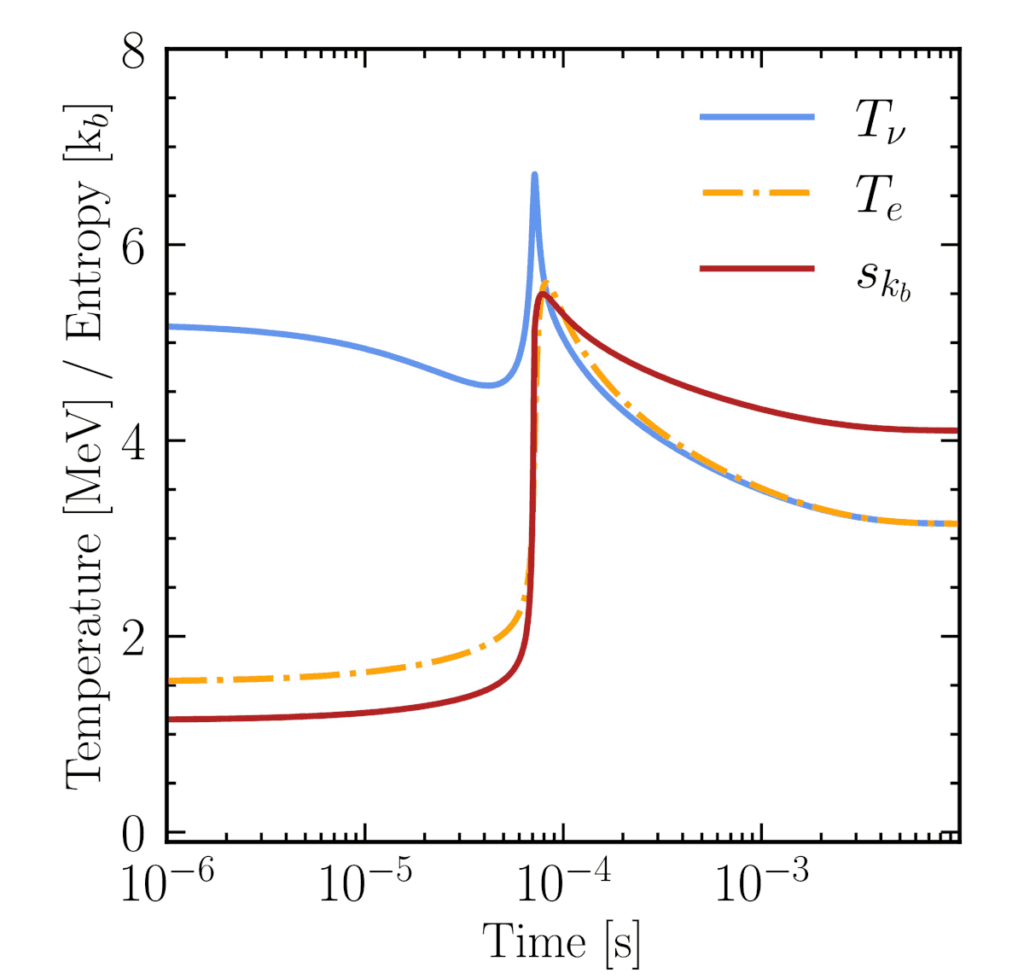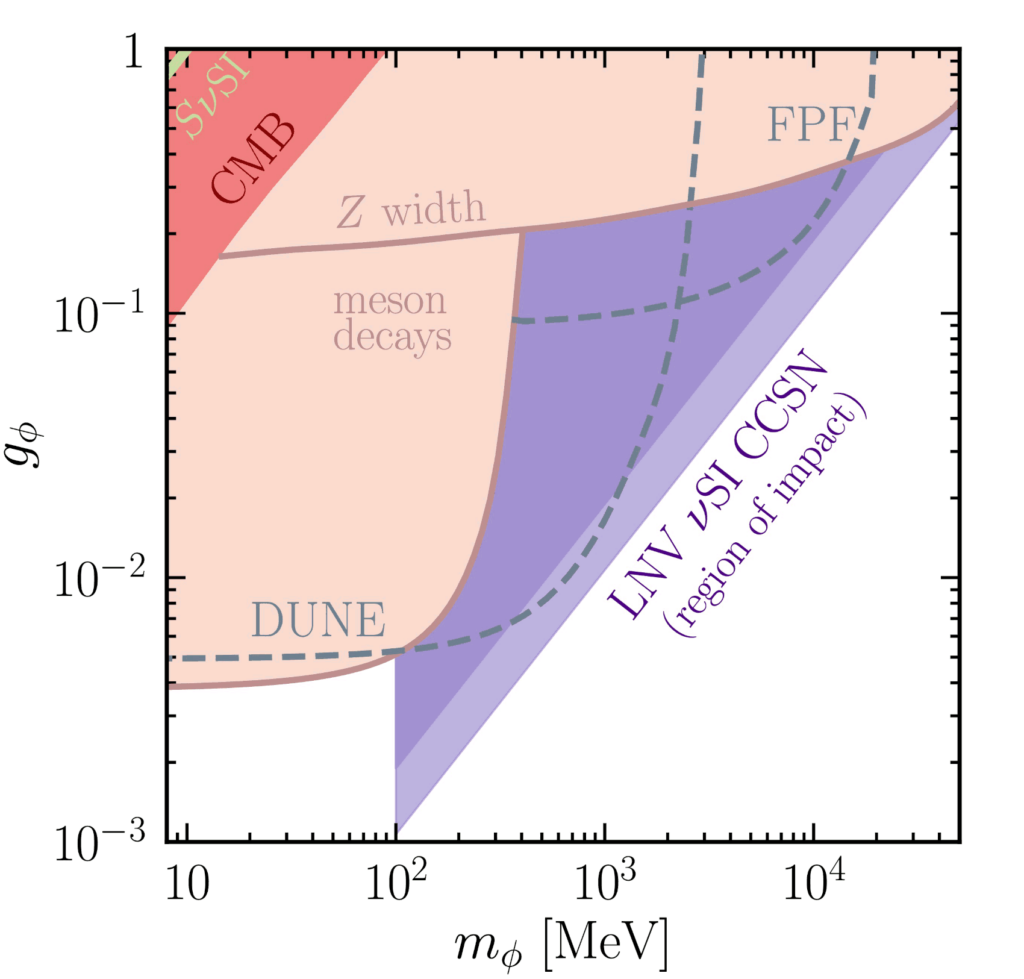Lepton Number Violating Neutrino Self-Interactions Heat Up proto-Neutron Stars
Prepared by Anna M. Suliga
Neutrinos are the most intriguing particles whose masses point to the existence of new physics. They rarely interact; therefore, they can directly probe the most extreme environments and provide insights beyond those that photons or charged particles carry.
Even with only Standard Model interactions, neutrinos play a critical role in core-collapse supernovae, cooling the proto-neutron star, setting the conditions for nucleosynthesis, and likely powering the explosion. Their effects could be immensely more profound in the presence of new physics, often poorly constrained by laboratory experiments alone.
Together with N3AS+ collaborators, we simulated the effects of the strong lepton number violating neutrino self-interactions (LNV νSI) on the infall phase of the core-collapse supernova evolution. We used Boltzmann equations of neutrinos and electrons to follow the evolution of the supernova core toward a new beta equilibrium. LNV νSI processes equilibrate all neutrino seas; hence, all neutrino species share a common temperature and chemical potential. The new lowered electron neutrino chemical potential renders increased electron captures.
The abrupt increase in entropy accompanying neutrino equilibration causes a corresponding abrupt decrease in the heavy nucleus mass fraction. As the entropy rises, nuclei with larger mass numbers are disfavored, nearly disappearing.
In the standard picture of core collapse, the relativistic electron pressure determines the size of the inner core and the initial shock energy after the core bounce. With LNV νSI, the number of electrons decreases significantly due to rapid electron capture. With a much higher number of free neutrons and a significantly lowered number of electrons, the non-relativistic baryonic component dominates the pressure support of the core. Such a drastic change may alter the downstream evolution of the collapse. One of the remaining questions is whether there is a thermal bounce before the core reaches nuclear density or whether the collapse proceeds to nuclear density, albeit with a larger inner core, because of a higher sound speed due to neutron dominance and higher temperature.

We have shown how strong LNV vSI could alter the standard supernova collapse scenario. Unlike many existing studies focusing on the late evolution effects, we simulated the impact of LNV vSI on the infall phase with a full analytic treatment. We found that the rapid neutrino-antineutrino equilibration leads to entropy generation and enhanced electron capture that may impact star evolution and the emitted neutrino signal. Timely DUNE neutrino detectors can also independently probe this new physics.

Read More:



